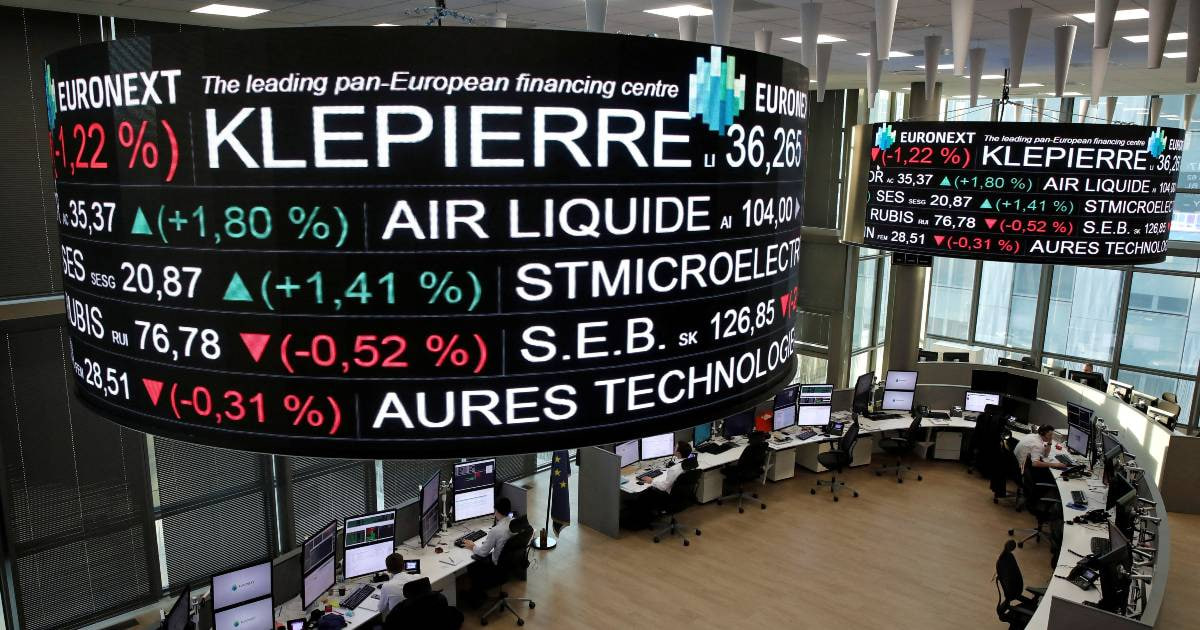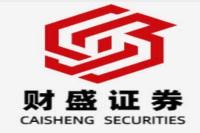China's Economic Pulse: A Deep Dive into Recent Developments and Future Outlook
Meta Description: Analyzing recent Chinese economic news, including GDP growth, border governance, investment policies, monetary policy shifts, and key sector updates, offering expert insights and future predictions.
The Chinese economy, a global behemoth, is constantly evolving. Recent news headlines paint a dynamic picture, showcasing both remarkable resilience and ongoing challenges. From ambitious infrastructure projects and robust foreign trade to strategic policy shifts in monetary and investment approaches, understanding the nuances of these developments is crucial for anyone invested in or curious about the world's second-largest economy. This in-depth analysis will dissect recent economic announcements, providing you with a clear, concise, and insightful overview. We'll go beyond the surface-level reporting, delving into the potential implications of these moves, and offering an informed perspective grounded in years of observing the Chinese market. Get ready to unravel the complexities, uncover the opportunities, and gain a competitive edge in understanding this fascinating and influential economic landscape. We'll explore everything from the government's commitment to high-quality growth and its initiatives to bolster key sectors like semiconductors and biomedicine, to the subtle shifts in monetary policy that signal a more supportive stance towards the economy. This isn't just data; it's a narrative of ambition, adaptation, and the ongoing evolution of a nation shaping the global economic order. Hold onto your hats, because this isn't your average economic report – it's a journey into the heart of China's economic engine.
High-Quality Growth: The Driving Force Behind China's Economic Strategy
China’s commitment to high-quality economic growth is a recurring theme in recent announcements. President Xi Jinping’s emphasis on shifting from rapid expansion to sustainable development underscores a strategic shift towards long-term prosperity. This isn't just about hitting GDP targets; it's about improving efficiency, innovation, and overall societal well-being. The claim of maintaining a 30% contribution to global growth is ambitious, and while subject to debate among economists, it reflects the government's confidence in its strategies. The focus on "high-quality" growth implies a move away from solely relying on investment-led growth models, prioritizing technological advancements, environmental sustainability, and improvements in living standards.
This shift is further reflected in initiatives like the "1+10" dialogue with major international economic organizations, demonstrating a commitment to global cooperation and engagement. It’s a smart strategy, fostering collaboration to navigate global economic uncertainties and strengthen international trade relationships. The emphasis on border governance modernization, as highlighted by the CCP Central Committee, also ties into this vision. A stable and prosperous border region is crucial for long-term economic stability and sustainable development, allowing for smoother integration into global trade routes.
Furthermore, the government's continued focus on infrastructure investment plays a vital role in this strategy. The significant investment in railway infrastructure, as reported by the National Railway Group, not only improves connectivity and facilitates trade but also directly boosts economic activity and creates jobs – a win-win situation.
Strategic Policy Shifts: Monetary Policy and Investment Initiatives
Recent policy announcements reveal a nuanced approach to stimulating economic growth. The shift to a "moderately loose" monetary policy after a decade represents a significant change, signaling a more proactive stance to support economic recovery. This is not necessarily a reckless move towards inflation; rather, it reflects a calculated effort to inject needed liquidity into the market and boost investor confidence. This is a calculated risk, designed to encourage investment and consumption while carefully managing inflationary pressures.
The Shanghai Municipal Government's ambitious plan to boost mergers and acquisitions (M&A) activities underlines another key aspect of the strategic approach. The target of 3000 billion yuan in M&A transactions by 2027 reflects a clear intention to consolidate industries, foster innovation, and enhance the international competitiveness of Shanghai-based companies. This focus on strategic mergers underlines the intention to foster industry consolidation, promoting efficiency and competitiveness. The focus on specific sectors like integrated circuits, biomedicine, and new materials highlights a targeted approach to developing technological leadership.
This proactive stance is mirrored by the National Development and Reform Commission's (NDRC) commitment to improving investment policy tools. The focus on "effective investment" emphasizes the need for projects with a strong return on investment and alignment with national strategic goals. This isn't about throwing money at any project; it's about carefully selecting investments that will generate tangible economic benefits and support long-term sustainable growth.
Sector-Specific Updates: A Glimpse into Key Industries
The recent news reveals a flurry of activity in various key sectors. The approval of nine new A500 ETF funds demonstrates the continued strong interest in the Chinese stock market. The near quadrupling of the existing A500 ETF net asset value showcases the market's potential and appetite for growth. Adding new funds brings fresh capital into the market, potentially boosting overall market liquidity and driving further growth.
The rapid advancement in the AI sector is also highly noticeable, with OpenAI's Sora video generation model becoming available to the general public. This highlights China's ambitious goals in the AI space, with multiple companies actively developing and deploying AI technologies across various applications. The surging AIGC (Artificial Intelligence Generated Content) concept stocks further demonstrate the growing excitement and investment in this rapidly developing technology.
In the energy sector, the significant dividend distribution by CATL (Contemporary Amperex Technology Co. Limited) demonstrates the company's strong financial position and commitment to shareholder returns. Simultaneously, the announcement of a new battery factory in Spain underscores the company's global ambitions and strategy for international market expansion. This demonstrates a level of confidence in both its financial performance and its future outlook. The decision underscores the growing internationalization of Chinese businesses and their search for global market share.
Other sectors, such as education (with increased support for teachers) and healthcare (with advancements in medical technology), have also seen notable developments, highlighting the government's commitment to improving social welfare and overall well-being. The government's emphasis on improving teacher welfare and boosting public education reflects a commitment to long-term human capital development and strengthening the nation's future workforce.
Challenges and Uncertainties: Navigating the Economic Landscape
While the news portrays a largely positive outlook, several challenges and uncertainties remain. Global economic slowdown, geopolitical tensions, and potential supply chain disruptions pose significant risks. The government's ability to effectively manage these challenges and maintain economic stability will be crucial for achieving its long-term goals.
Moreover, the effectiveness of policy interventions will be a key factor in determining the success of the government's economic strategy. The art lies in striking a balance between stimulating growth and maintaining financial stability. Careful monitoring of inflation and effective management of financial risks will be critical. The effectiveness of the new "moderately loose" monetary policy will be crucial in achieving this balance. Too much liquidity could lead to inflation, whereas too little could hinder economic recovery.
Furthermore, fostering innovation and technological advancement will be essential for sustaining long-term growth. The government's focus on key sectors such as semiconductors and biomedicine is a step in the right direction; however, overcoming technological barriers and attracting talent will be crucial for achieving global competitiveness. China's success in developing its own chipmaking capabilities and competing with global leaders in such technologically advanced sectors will be a key indicator of its economic future.
Frequently Asked Questions (FAQ)
Q1: What is China's current economic growth target?
A1: While the specific target isn't always publicly stated with exact figures, the recent news strongly suggests a focus on achieving continued growth while transitioning to a high-quality growth model that prioritizes sustainability and efficiency over rapid expansion.
Q2: How is the government addressing the challenges facing the economy?
A2: The government is employing a multifaceted approach, including strategic policy adjustments (like the shift to a moderately loose monetary policy), targeted investments in key sectors, and initiatives promoting mergers and acquisitions to enhance competitiveness. They also focus heavily on maintaining social stability and ensuring a healthy workforce.
Q3: What are the key sectors driving China's economic growth?
A3: Key sectors include technology (particularly AI and semiconductors), renewable energy, biomedicine, and infrastructure. The government is actively supporting the development of these sectors through targeted policies and investments.
Q4: What are the risks facing the Chinese economy?
A4: Risks include global economic slowdowns, geopolitical uncertainties, potential supply chain disruptions, and the need to manage inflation while stimulating growth.
Q5: How does China's economic strategy compare to other major economies?
A5: China’s strategy emphasizes a state-led approach to economic development, with significant government intervention in key sectors. This contrasts with the more market-driven approaches of economies such as the United States, although most economies utilize a blend of both methods.
Q6: What is the outlook for the Chinese economy in the coming years?
A6: The outlook is mixed. While the government is optimistic about maintaining strong growth, the global economic climate and internal challenges pose significant uncertainties. The success of the ongoing economic reforms and strategic initiatives will play a crucial role in shaping the future economic landscape.
Conclusion
China's economic journey is a complex and fascinating narrative. The recent news underscores a government determined to navigate evolving global dynamics while pursuing its ambitious long-term goals. While challenges persist, the strategic initiatives and policy adjustments suggest a proactive approach to maintaining economic stability and fostering sustainable, high-quality growth. The coming years will be crucial in determining the success of this strategy, and careful observation of economic indicators and policy developments will be essential for anyone seeking to understand the future of this global economic powerhouse. The ongoing story of China's economic evolution is far from over; it's a dynamic and captivating narrative that continues to unfold.



